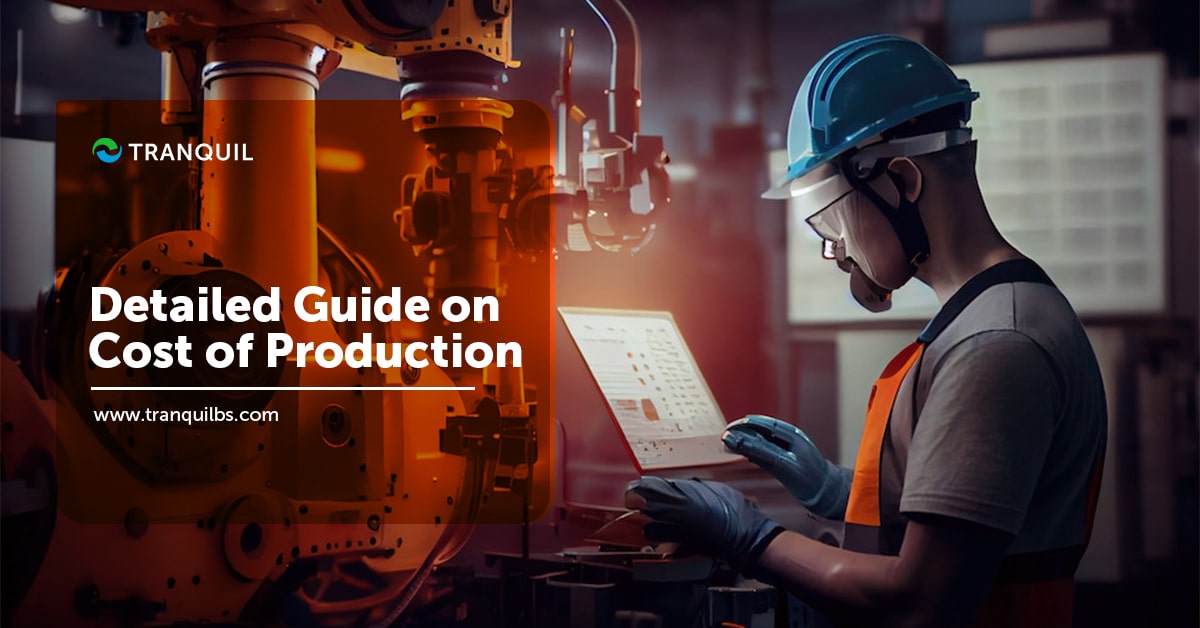
What is Batch Scheduling and What are Its Benefits?
To ensure that your manufacturing process is successful, it is imperative that your production schedule is properly designed, with optimal workflows that minimizes wastage and reduces expenses.
There are several ways in which companies schedule manufacturing runs – from the conventional large-scale production to small-scale production scheduled only according to demand.
Batch scheduling is one of the oldest production approaches, and is still commonly used.
This method involves planning production of items in groups instead of a continuous cycle of production or individual scheduling.
ALSO READ: What is Batch Picking?
What Is Batch Scheduling?
Let’s understand what batch scheduling is in a little detail.
In batch scheduling, products that are the same, are grouped together as batches.
All the production process steps are applied to a group of items simultaneously.
Once the entire batch is done, it is moved to the next stage.
It is extremely important for manufacturers to decide the timing and method of scheduling production runs when planning production.
They have to think about factors like cost, raw material availability, machinery required, speed, throughput, and so on.
Manufacturers often choose batch scheduling as it allows them to manufacture a specific quantity of a type of product without changing the manufacturing setup and processes, lowering costs and creating economies of scale.
ALSO READ: Route and Van Sales
Batch Scheduling Explained

We saw how batch scheduling refers to clustering similar items together to be produced in a run, instead of a continuous process or one at a time.
Companies often find this method to be more economical and are able to exert better control over the quality.
Batch scheduling is preferred by manufacturers of plastic, steel, chemicals, papers, apparel, cosmetics, food and beverages, paper, biotech products, FMCG products, or any others where multiple products are manufactured using the same raw materials or machinery and settings.
Here, companies often need to produce different types of products using the same processes and machines.
However, it can be more costly and time-consuming to keep changing the raw materials, machine settings, or components for different orders.
Therefore, the company will manufacture a batch for a specific item for a specific time period, and then make the changes for the next product type.
ALSO READ: What is Negative Inventory?
How Batch Scheduling Works?
A group of a specific item undergoes a process in the production stage before the batch is moved to the next stage.
Let us assume that it’s a garment factory and the first stage is dyeing fabric, and the second is cutting it into the requisite sizes and shapes.
This is very different from conventional demand-driven production where one item was manufactured from start to finish.
With batch scheduling, production can be streamlined.
This is achieved by creating a BoM or product recipe for a specific product, the order in which the ingredients are to be added and the processes they have to go through in order to get the final product.
Based on the preferences in sales orders, every batch could be different, allowing manufacturers to change the specifications, and adjust the settings to make place for various sizes, shapes, colors or other changes from one batch to the next.
Let us take the example of a packaged snacks manufacturer who makes potato chips in five flavors.
They most probably use the same equipment, some of the raw materials, and packaging components for the entire product line; there will of course be slight variations in the packaging and ingredients used.
Here batch production can be employed efficiently rather than going on changing machine settings, raw materials and other inputs to manufacture the different chips as required.
The manufacturing line is configured to produce a specific quantity of one type of chips, and it is produced in a batch.
When that is completed, the raw materials, inputs, and settings are changed to produce the second batch of chips, and so on.
ALSO READ: ERP Software to Enhance your Purchase Management
Benefits of Batch Scheduling

This efficient method of manufacturing delivers benefits even after production.
Let’s take a look at some of the important advantages of batch scheduling:
1. Increased Productivity
When multiple products have to be manufactured on the same line, you can employ batch scheduling and avoid continuously toggling between the different equipment controls.
With batch scheduling, you can reduce the rework required to manufacture products by organizing the production around a batch of similar products at one time, and making the necessary changes before the next batch of items is put through the line.
2. Decreased Costs
Concentrating on manufacturing one batch at a time is often more cost-effective, and production can be scaled easily, bringing down the cost of individual product production.
This also helps to minimize delays, eliminate bottlenecks, and reduce the cost of manufacturing as compared to manufacturing them individually.
Batch manufacturing helps achieve economies of scale, as they utilize labor and processes capable of executing production of large groups of items at the same time.
ALSO READ: What is Cross-Docking and How Does it Work?
3. Better Tracking
Batch scheduling allows companies to track batches efficiently; batch tracking is a practice in inventory management that puts together items that have similar characteristics of production like raw materials, accessories, parts, expiry dates, manufacturing date, and so on.
Batch tracking facilitates greater inventory control, better post-sales service, enhanced delivery sequencing, and so on.
Manufacturers can also track these products easily and efficiently throughout their life cycles, streamlining communication about defects detected later, and can resolve or recall them easily.
4. More Agility
Batch scheduling helps companies to respond to sudden trend changes in the market and to seasonal demands for products in an agile manner, without having to carry out production continuously.
Companies that do batch scheduling can manufacture different products in the correct quantities.
ALSO READ: What is Dead Stock – How Can You Avoid It?
5. Enhanced Quality Control
It is much easier to manage quality at different stages of manufacture when batch scheduling is followed as you only have to concentrate on one item at a time, and not mass produce goods.
Any batch that is found to have defects can be eliminated; unlike in the conventional method where a huge number of products would have had to be discarded, here you only need to discard that specific batch.
6. Less Wastage
When you concentrate on manufacturing one type of a product at a time, you can ensure that you don’t waste much during the process.
The production of slow-moving products can be easily scaled down immediately, ensuring you have small and manageable inventory levels.
ALSO READ: Ways to Improve the Procurement Process
Drawbacks
As in everything, batch scheduling does have some disadvantages as well.
- As this method involves a sequence of steps that are executed one after the other rather than simultaneously as in mass production, batch scheduling is likely to increase production time.
- The machines have to be stopped between batches as quality control checks are conducted before producing the next batch – and this could mean extended machinery and labor downtime.
- In on-demand production, you may be able to detect an anomaly after producing a single item but if you find it during a specific step in batch production, you may need to get rid of the entire batch.
ALSO READ: Cost Effectiveness Vs Cost Efficiency
What is Ideal for Batch Scheduling?

Some industries and specific products are more suitable for batch scheduling and manufacture than others.
For example, if you want to manufacture a large number of items with low variation, this approach is a great fit.
It is not suitable for customized products and those produced in low volume.
In spite of this, a large range of businesses employ batch production – from chemical and pharmaceuticals to apparel and cosmetics, to steel and chemicals and more.
In all these industries, multiple types of goods can be produced using the same equipment or facilities.
Consider these examples: a skincare company may manufacture huge quantities of sunscreen lotion just before the onset of summer, and batches of moisturizers just before it starts getting cold.
A company that makes and sells baked products can use the same equipment to bake different types of bread, cakes, muffins, and biscuits in separate batches.
ALSO READ: What is Economic order Quantity?
What Is Batch Scheduling Software?
In a production process, scheduling is a very complicated function, especially when companies take into account trends in demand and supply so that inefficiencies between different batches can be reduced.
Batch scheduling software or batch scheduling function in robust comprehensive ERP software like Tranquil helps them maximize the use of their assets and facilities, increase throughput, and reduce costs.
Common Batch Scheduling Features and Capabilities

As we said before, modern cloud-based ERP solutions like Tranquil help manufacturers perform batch scheduling.
Here’s a peek at the requisite features:
- Modeling feature – a robust batch scheduling solution will allow you to create advanced models of machines, facilities, capabilities, and restrictions, helping you to develop accurate batch schedules that can be executed effectively.
- Visualization and management in real-time – with graphical representations, decision-makers can easily and clearly see how the production run is progressing in real-time, in formats that are easy to understand. They can also be alerted to any deviations or disruptions straight away. It becomes easy for companies to manage batch schedules and manage them more efficiently.
ALSO READ: Inventory Management Trends to Know
- Optimizing scheduling – with sophisticated tools to plan production, companies can ensure maximum efficiency of batch scheduling, improved throughput, and minimal expense. Machine learning and AI play a big role in this.
- Demand management – manufacturers can align their batch production with contemporary conditions and trends in dynamic environments by including insights on demand from internal stakeholders and external customers.
Choosing the Right Batch Scheduling Software
Obviously, the right software would be one that helps you meet your production requirements.
It makes sense to consult all the important stakeholders – managers of operations department and your supply chain, so that you have a clear understanding of business requirements and can prioritize the features you need.
You can then check out the solutions available in the market, ask for feedback from those who have used them, and also request for demos.
Look for options the vendor provides like implementation and support, and integration as well.
ALSO READ: Effective Inventory Restocking Methods
Why Tranquil?
Tranquil can easily integrate other business systems you have; as a robust, cloud-based ERP, it contains all the requisite features of batch scheduling, that will help you plan your production runs efficiently and help you save money and enhance productivity.
Tranquil ERP can help you streamline all your business processes and boost profitability.
To see how Tranquil can benefit your business, schedule a FREE demo at a date and time of your convenience. Our team will be happy to take you through the solution, and answer any questions you may have.



